Cairo Attractions:
Known as the greatest city in the Islamic world, Cairo’s ancient monuments and medieval customs thrive in a cosmopolitan, modern city. A blend of Arab, African and European influences, Africa’s largest city has a population of at least 18 million. Situated on the Nile, the city is polluted and overcrowded, and getting around poses many challenges, although it has greatly improved with the ever-expanding underground Metro system.
In Islamic or (Medieval) Cairo, narrow congested streets are filled with donkey carts, spice traders and imposing mosques. A central landmark is Midan Hussain, a large open square with tea houses around the perimeter, and dominated by the sacred Mosque of Sayyidna Al-Hussain. Adjacent is the famous Khan-el Khalili, one of the world’s largest bazaars, pulsing with commerce and crammed with spices, coppersmiths, perfume and trinkets. Bargaining has been a way of life in these alleyways since the late 14th century and it is easy to get taken in by silver-tongued salesmen. Here, Fishawi’s tea house has been in business for over 200 years, and is still a great people-watching venue.
Nearby is Al-Azhar Mosque, containing the oldest university in the world (AD 970). The pre-Ottoman Madrassa and Mausoleum of Al-Ghouri, has Sufi dancing, and opposite is Wakala of Al-Ghouri, an attractively preserved cultural centre. Exhibits in the Museum of Islamic Art bring Islamic Cairoto life, with arts, ceramics, mosaics and calligraphy.
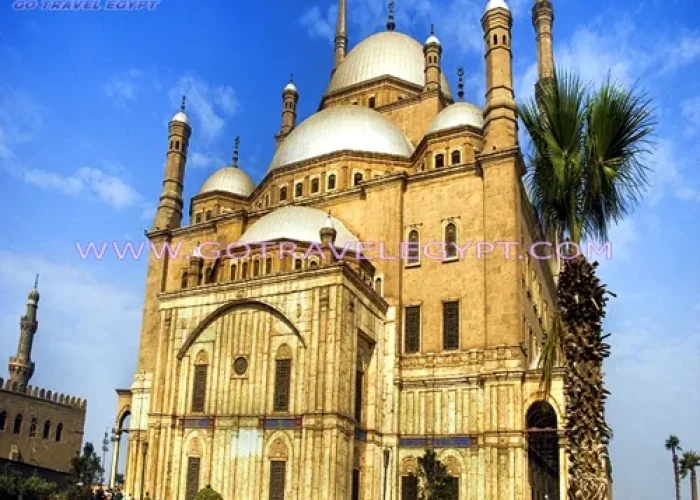
The Citadel was home to Egypt ‘s rulers for 700 years; an imposing medieval fortress offering sweeping views of the city. Within it is the Midan Salah al-Din with the unmissable Sultan Hassan and Rifai Mosques. TheMohammad Ali Mosque has classic Ottoman minarets and interior. Within the Citadel, other attractions include the Military National Museum, Al-Gawhara Palace and Museum and the National Police Museum.
City of the Dead (Northern Cemetery) is a Mamluk necropolis with hundreds of thousands of tombs dating from the 12th century. Many thousands more live here in something resembling a shanty town amongst the ornate mausoleums.
Sharia Talat Harb street and Midan Tahrir (Liberation Square) are typical of the more modern, commercial centre of Cairo ? filledwith concrete and cars, and containing countless hotels, restaurants, office blocks and museums. Here is one of the country’s greatest attractions; the Museum of Egyptian Antiquitieshousing over 130,000 exhibits, including Pharaonic and Byzantine art and sculpture, the Mummy Room and the celebrated Tutankhamun exhibition.
Behind the museum, bridges cross the Nile, and riverside walks along the corniche bring some relief from traffic. Here, river taxis travel to local docks, and feluccas (sail boats) are available for private trips.
The south is home to the Coptic Orthodox Christians, forming 10 per cent of the population. Originally a Roman fortress town called Babylon, it was greatly significant to early Christians. Here, theCoptic Museum has exhibits from AD 300 to AD 1000, in the world’s greatest collection of Coptic art. The Hanging Church, Monastery of St George and the churches of St Sergius and St Barbara are all in the same area. The Ben Ezra Synagogue is one of the oldest in Egypt, and represents the remains of the Jewish community.

The small island of Gezira is a modern upmarket area with the Opera House (a US$30 million arts complex) containing the Museum of Modern Art, and the Cairo Tower with great city views. The adjacent neighbourhood of Zamalek contains elegant town houses and embassies. On the southwest outskirts of the city isGiza with Cairo Zoo and the University. But Cairo is most famous for the Great Pyramids, Egypt’s most visited monuments. Of the three main pyramids (Cheops, Chephren and Mycerinus), the largest is 137m (449ft) high and contains some three million blocks of stone. Exploring the interiors is possible via labyrinthine tunnels and staircases. Adjacent is the bewitching Sphinx, as named by the ancient Greeks, with the head of a woman and body of a lion. Erosion was partly rectified by restoration, which finished in 1998. Early morning and late afternoon are a little less crowded, and every evening there are son et lumière – extravagant light shows telling the story of ancient Egypt. Camels, horses and donkeys can be hired to explore the site.
ELSEWHERE: There are more ancient tombs and pyramids outside the city – more difficult to get to but much less crowded. There are remains of the Old Kingdom’s capital Memphis; the necropolis at Saqqara, with the Step Pyramid older than those at Giza, with well-preserved wall reliefs and royal tombs. Dahshur has only been open to foreigners since 1996, and is famous for its Bent Pyramid and a huge field of royal tombs.
In contrast to ancient sights, the Camel Market (Souq al-Gamaal),is held every morning at Birqash, around 35km (21 miles) from the city, located on the edge of the Western Desert. Hundreds of camels are sold daily, most having been brought from Sudan.
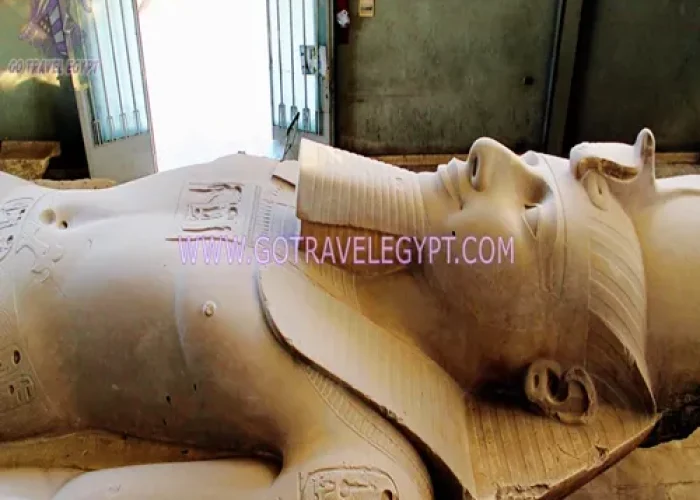
Egypt’s Oasis :
Egypt ‘s Five Oasis can provide relief from cities. All have accommodation and can be accessed by public transport. The desert forms 94 per cent of the country’s area, yet only 1 per cent of the population lives in it. The largest and most developed oasis is Kharga, with a Berber community, temples and museums. Dhakla Oasis has hot springs, and camel rides over the sand dunes.
The nearby village of Bashandi sells handicrafts made by local girls.
The smallest is Farafra, an ancient fort town;
Bahariyyaa Oasis by car. It is 385 km from Cairo and will take approximately 4 hours to reach and is made up of several small villages and the antiquities of El Baheriya Oasis, Greek-Roman Mummies at Antiquities Office, Greek-Roman Cemetery from Valley of Mummies, Temple of Alexander the Great, Pharaonic Temple ‘Ai El Maftella (26th Dynasty) and Pharaonic Thumb ‘Banatiu’ (26th Dynasty)., and you Can depart for a day trip to Black and White Desert by land cruiser on half asphalt/half road. Enjoy picnic lunch on the sight. After the sunset, return to the oasis.famed for its olives and dates.
Al-Faiyum Oasis is 100km (60 miles) southwest of Cairo , and the area contains small pyramids, the old city of Karanis, and temples. Siwa is the furthest west and remote, but the most picturesque and idyllic. The community is traditional and Berber-speaking
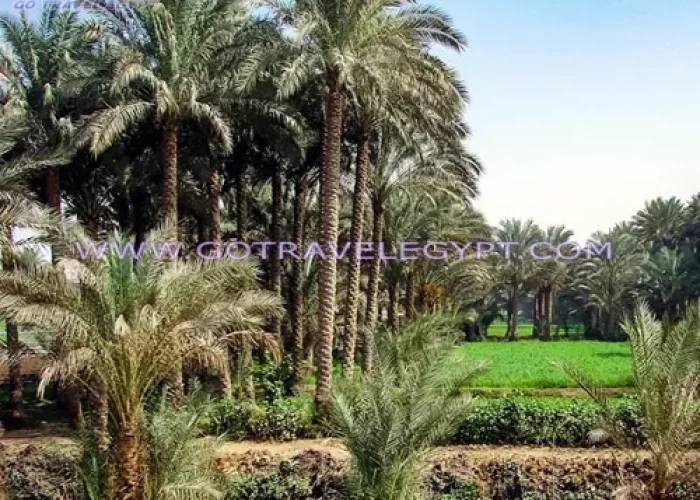
The Nile :
Many tour operators offer Nile cruises, usually between Luxor and Aswan , and generally lasting around 03 Nights or 4 Nights . It is also possible to get a cruise to Minia (a charming town with Roman, Greek and Pharaonic ruins, including the Beni Hassanarchaeological area) and/or through to Cairo. Felucca trips offer the same route ? with more basic facilities.
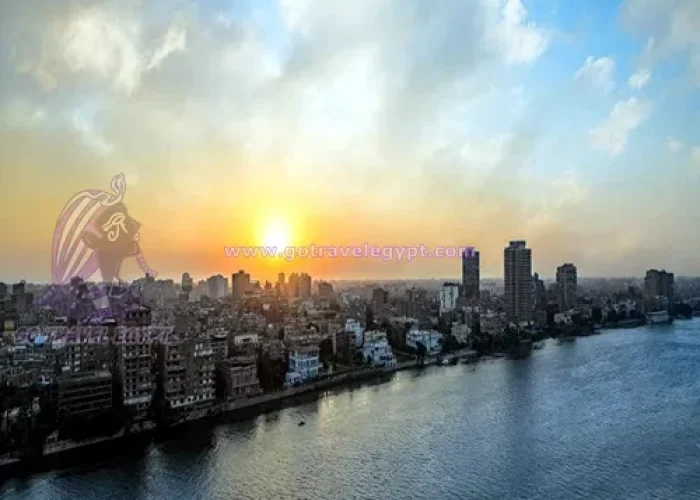
Luxor Attractions :
Once the ancient city of Thebes and powerhouse of upper Egypt, Luxor has grown into a large town, awash with hotels, restaurants and souvenir shops, with most of its economy coming from tourism.
A highlight is the Karnak Temple , covering an immense 100 acres (40.5 hectares). Of the three temple enclosures, the grandest is the Precinct of Amun, the main place of worship. The Great Hypostyle Hall is 6000 sq m (64,584 sq ft) and filled with immense stone pillars. The whole site has colossal statues, reliefs, obelisks and halls and, of course, the Avenue of the Sphinxes. There are nightly son et lumière shows.
Along the riverbank, Luxor Temple is guarded by a huge statue of Ramses II, and although a fraction of the area of Karnak , it alsocontains countless columns, statues and sphinxes. A pleasant walk north along the corniche brings you to the Luxor Museum where a small, interesting collection of relics from the Theban Temples and Necropolis can be viewed. The recently opened Mummification Museum has exhibits of human, reptile and bird mummies, as well as explanations of how they are made.
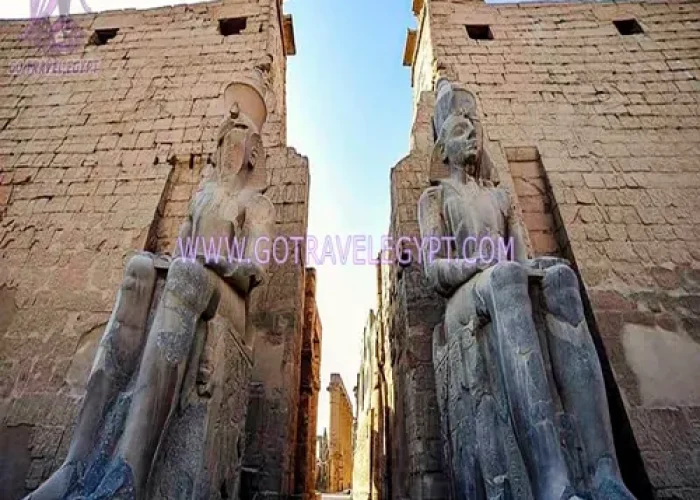
On the West Bank of the Nile is the vast Theban Necropolis, containing some of the world’s finest tombs: the Valley of the Kings; Valley of the Queens; and Tombs of the Nobles. Highlightsinclude the Tomb of Tutankhamun; Ramses II; and the Tomb of Nefertari, reputed to be the country’s finest, which is newly restored and allows only 150 visitors a day for 10 minutes. Nearby is Deir el-Bahri (Northern Monastery), a picturesque temple set amidst the amphitheatre of the Theban Hills.
Along the Nile , felucca owners tout for custom, and it is possible to hire one for a brief sunset cruise to Banana Island , or even to organise a trip upriver to Aswan . Hot-air balloon trips are also available, offering the best views of Luxor .
Around Luxor Temple , shopping is dominated by tourist bazaars with enthusiastic salesmen. The more traditional souk, with household goods, spices and clothes, is on Sharia el-Birka. Cafes and stalls sell hot food, and there are rooftop terraces overlooking the river. A livestock market is held every Tuesday morning at El-Hebel, a village 4km (2.4 miles) from Luxor .
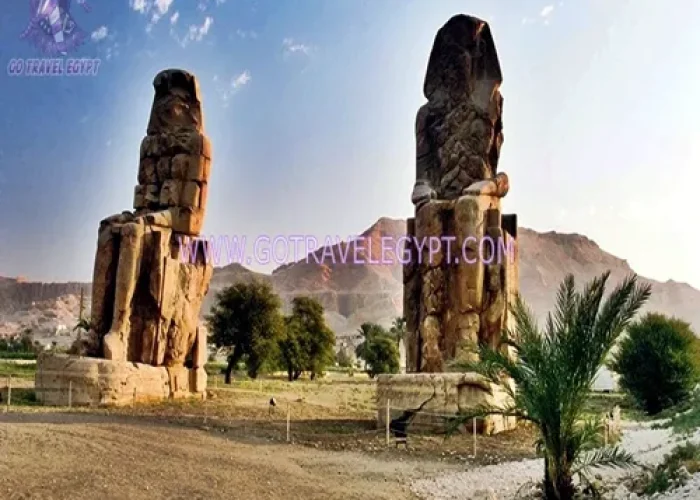
Aswan Attractions :
A beautiful winter resort, relaxing Aswan is the southernmost city in the country; the gateway to Africa , and steeped in Nubian culture. Although the sights are not the country’s finest, the town’s riverside location is picturesque and peaceful. It has a busy tourism scene although it is less aggressive than Luxor .
The corniche provides attractive riverside walks, and a stop-off for many cruise ships. In the evenings, floating restaurants provide a lively gathering place, and the world-famous folkloric dance troupe performs nightly during winter months at the Cultural Centre.Southernmost is the Old Cataract Hotel ( famous as the location of the film ‘Death on the Nile ‘). Sharia el-Souq is the atmospheric market stretching for streets, with spices, food and clothes, as well as predictable tourist souvenirs.
Elephantine Island is easily accessible by river taxi. Formerly Egypt ‘s frontier town, recent excavations of this ancient site haverevealed temples and a fortress. Aswan Museum contains exhibits found in Nubia and Aswan . The Nilometre on the south of the island, dating back to Pharaonic times, was used to measure the height of the Nile .
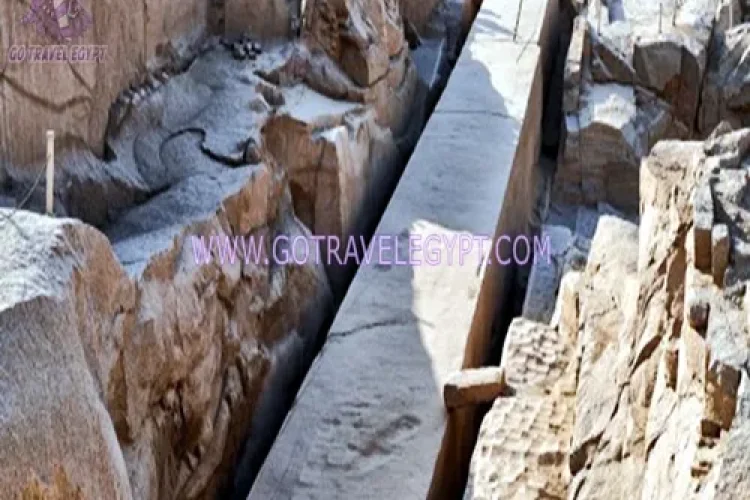
Further south is the tiny Island of Plants, presented to Lord Horatio Kitchener in the 1890s in recognition of his military services. Importing exotic flowers and plants from India and Malaysia , he created a beautiful botanical garden, open daily to the public, attracting a wide variety of birds.
On the West Bank of the Nile lies the Monastery of St Simeon, which resembles a fortress. Nearby is the domed granite and sandstone Mausoleum of Aga Khan.
Beyond Aswan :
Outside the city are the Aswan Dam, built by the British at the beginning of the century, and the Temple of Philae , on the Island of Philae . The Temple is one of Egypt ‘s most famous attractions, and after being under threat from flooding from the High Dam, UNESCO moved it stone by stone to a higher point on the island.
Further afield is Abu Simbel, the magnificent Sun Temple of Ramses II, also rescued from flooding by UNESCO. Ramses had four gigantic statues of himself built in order to intimidate travellers entering Egypt from Africa, especially the Nubians.
Kom Ombo, 30km (18 miles) north of Aswan , is a largely Nubian settlement, known for its Temple of Haroeris and Sobek. Nearby is the Darow Camel Market, held every Tuesday morning and mainly frequented by tribesmen from the northern Sudanese deserts.
Edfu is famed for the largest and best preserved PharaoronicTemple in Egypt, the Temple of Horus . It is a favouredstarting/stopping point for felucca trips to and from Luxor .
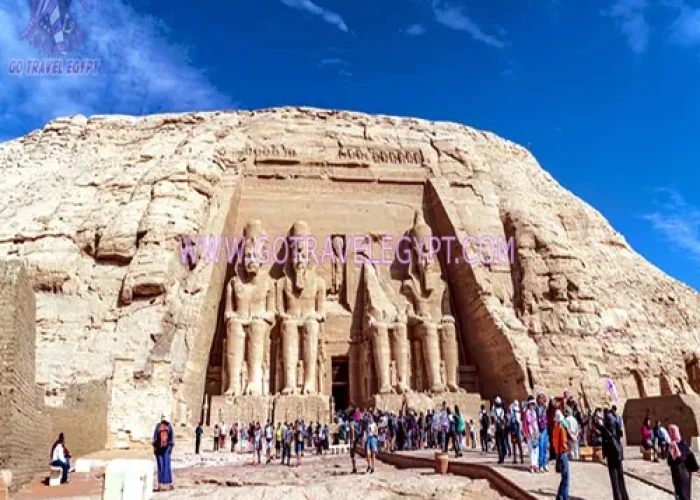
Alexandria Attractions :
The Northern Coast is dominated by Alexandria, conquered and designed by Alexander the Great. More Mediterranean than Arabic, it was always considered affluent and liberal, and still attracts wealthy Cairenes as a summer retreat. Egypt’s second city is less chaotic than Cairo, and famed for its numerous Hellenistic and Roman relics from the age when it was the cultural capital of Europe.
The newly constructed Bibliotheka Alexandria, costing over US$300m, is the greatest library in the ancient world and a major research centre for scholars. Relics from the third century BC are exhibited in the Graeco-Roman Museum, and there is a recently excavated Roman Amphitheatre. Fort Qait Bey is a 15th-century fort built on the foundations of the Pharos Lighthouse, one of the Seven Wonders of the World. The modern Mosque of Abu al-Abbas Mursi dominates the main square on Sharia Tatwig, and other places of interest include the Museum of Fine Arts, and Montazah Palace with attractive gardens, often the summer venue of theatre performances.
El Alamein is a small coastal village 100km (60 miles) west of Alexandria and an easy day trip. Famous as the scene of a decisive Allied victory, which determined the fate of Egypt and Britain’s Empire, there is a War Museum, Cemetery and Memorial to the soldiers who died in battle.
Further west is the coastal resort of Mersa Matrouh, which has a good beach, although it can be overcrowded in summer.

Sinai and the Red Sea Coast:
A great example of modern engineering, the Suez Canal links the Red Sea with the Mediterranean. Completed in 1869, it has repeatedly been the cause of dispute, most recently when blocked during the 1967 war with Israel. Port Said is the main city. Anyone travelling to Sinai by road would cross the Suez on a small shuttle boat, or under the tunnel.
The Red Sea Coast sits strategically between Africa and Asia, rich in mineral wealth and revered as the place of miracles and prophets in Judaism, Islam and Christianity. God is said to have appeared to Moses here, and thought to have delivered the Israelites from the Egyptian army into the Red Sea. These days, the region is revered for its spectacular diving resorts, beaches, stunning coastline and vast deserts. This area has some of the best diving and snorkelling in the world, and has a more liberal atmosphere than the rest of Egypt.

The coastline attracts tourists ranging from top-class package deals, to backpackers in campsites: Sharm el-Sheikh is a large resort, and is best for diving. Na’ama Bay is much better developed and upmarket, with private beaches. A few kilometres north isShark Bay, a quieter resort camp. The beaches at Dahab are spectacularly framed by jagged mountains. Holiday villages within a Bedouin settlement are close by. Nuweiba is a port city, with a plethora of resorts, and is famous for Olin the dolphin, with which people can pay to swim. Local Bedouins offer jeep safaris into the interior. Between here and Taba, there are many small, quiet resorts that threaten to be overshadowed by a huge new tourist development, Taba Heights. On the west of the Red Sea Coast, the biggest diving resort is Hurghada, once a fishing village and now a major commercial tourist centre. Ras Muhammed is the southernmost point on the peninsula, fringed with lagoons and reefs, and is now a National Park.
Little is accessible in Sinai’s interior, a barren area with rocks and sands, and the best way to explore this is by treks or safari by camel or jeep. One of the highlights is St Catherine’s Monastery,now home to Greek Orthodox monks. St Catherine was the legendary martyr of Alexandria, who was tortured and beheaded for her Christianity. It has been a place of pilgrimage since the 4th century. Within the monastery is the ‘burning bush’ from which God is said to have appeared to speak to Moses. Mount Sinai, revered as the site of God’s revelation of the Ten Commandments, is a craggy and sheer-faced mount of grey and red, dramatic and steep. Care should be taken when ascending. Other places to visit in this region include Oyun Musa (‘Springs of Moses’), Qalat al-Gindi, an 800-year-old fortress, and Hammam Fara’un’s hot springsand isolated beach.
